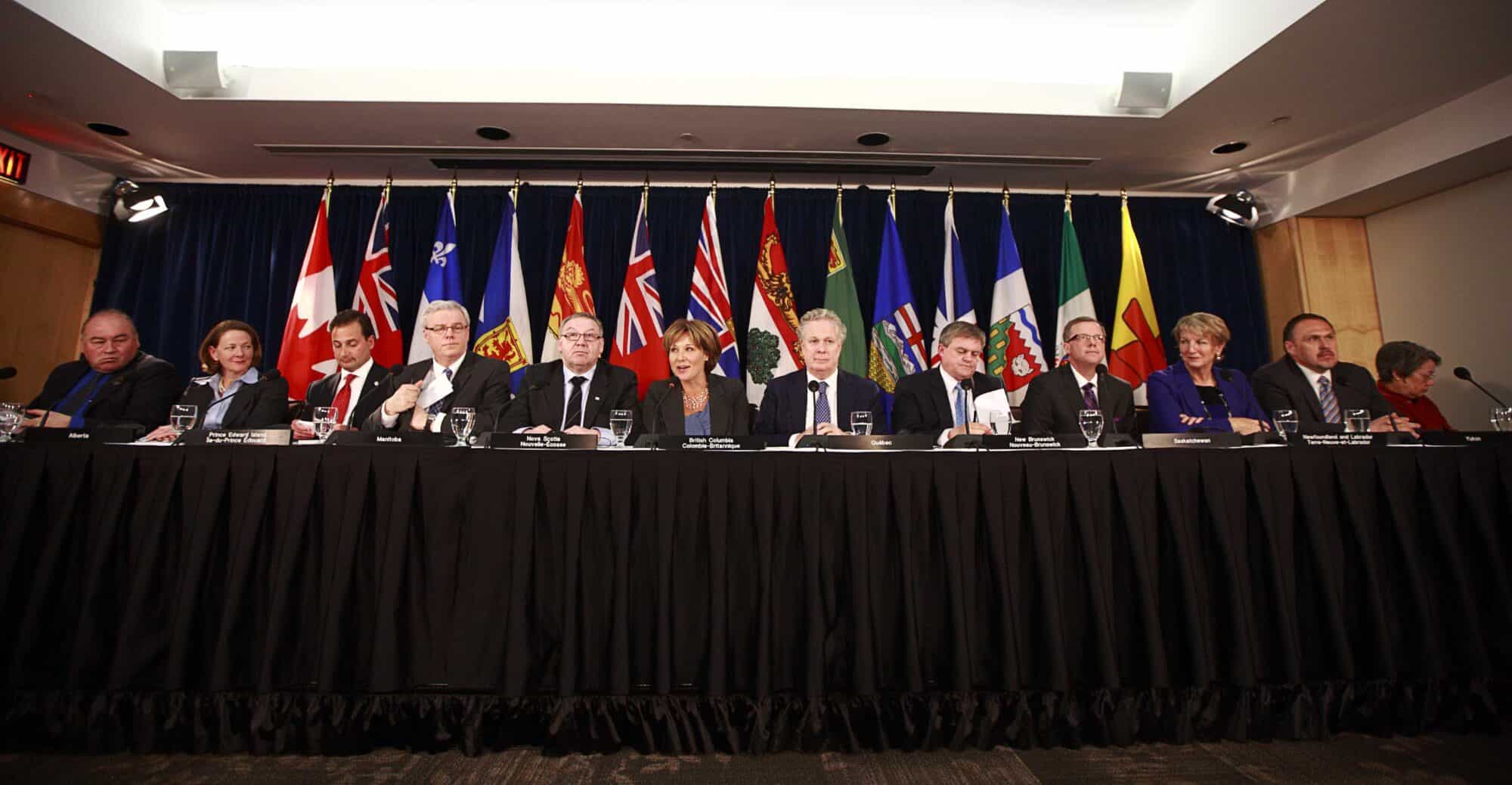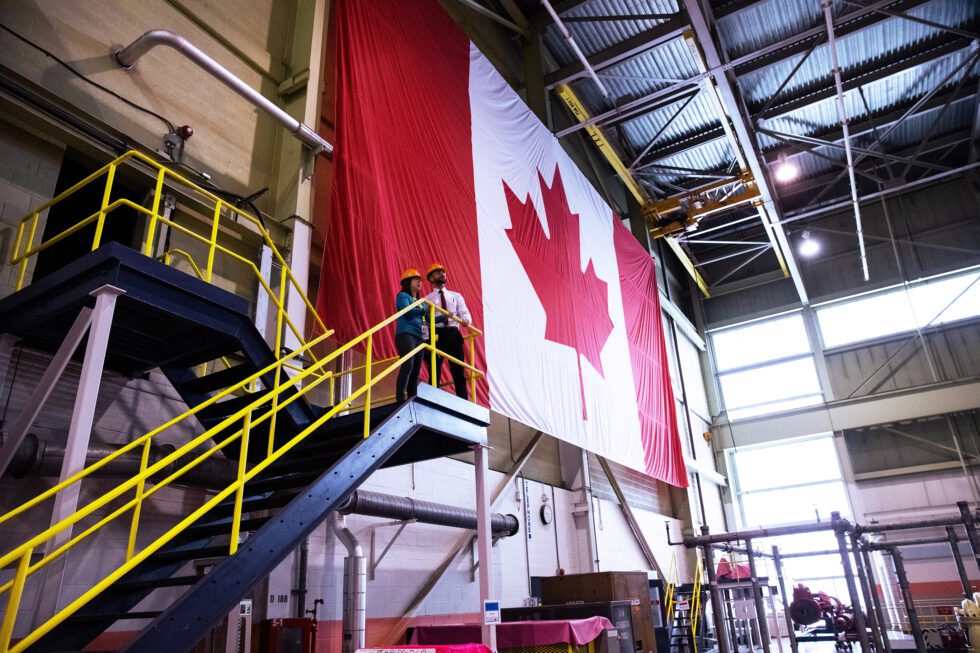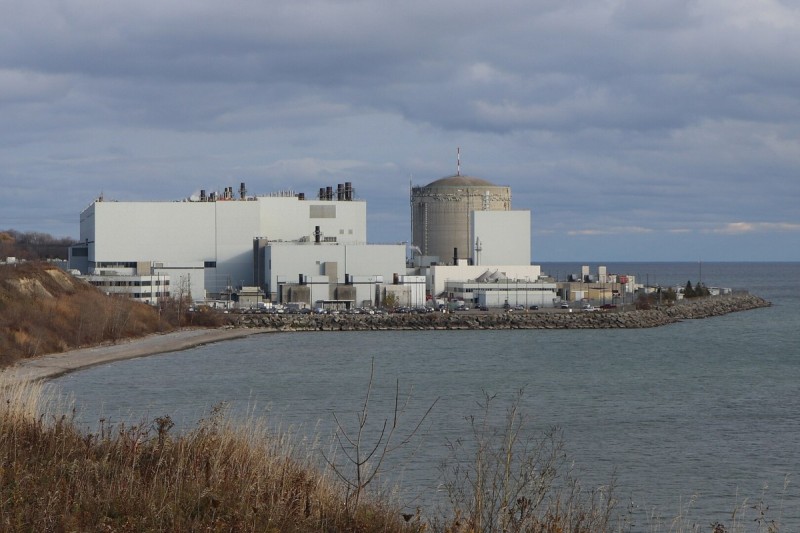Last week, Liberal leader Justin Trudeau appeared to back away from a national carbon price. He said some of the provinces have already implemented carbon pricing, so the federal government will be left to “oversee.”
What Trudeau is actually saying isn’t quite clear, but it certainly seems like he is giving up on creating a national carbon price and leaving it to the provinces.
In the subsequent discussions on Twitter, some pointed towards the difficult politics of carbon pricing in Canada’s regionally diverse federation. Below, I will argue that the ideal policy response to Canada’s regional diversity involves implementing geographically-specific clean energy transition policies. It does not involve giving up on a national carbon-pricing framework.
The problem with leaving carbon pricing up to the provinces is that a national policy to make polluters pay will not be effective or uniformly implemented. In Canada, it is the relatively low per-capita emitting provinces of British Columbia, Quebec and possibly Ontario that have shown a willingness to price carbon. If a new federal government abdicates its responsibility to implement carbon pricing, the highest emitting provinces will be able to continue to do very little (e.g. Alberta) or nothing.
Furthermore, one of the reasons provinces and American states launched collaborations on carbon pricing to begin with was because they anticipated that their respective federal government’s would eventually take action. Many of the sub-national initiatives have lost steam because national governments have not moved to create national standards. (On this see UBC political scientist Kathryn Harrison.)
Ideal carbon pricing policy involves a uniform price for every tonne of GHG, regardless of where it is emitted. This has been the mantra of market-oriented environmental economists for some time now. Of course, a carbon pricing policy has to actually be implemented and this involves politics. As is no surprise to political economists, a carbon “market” — or a tax equal to the cost of the environmental externality — does not just naturally evolve. New market and market-based incentives need to be implemented by the state, and this introduces political power and political negotiation.
Canadian politics has historically revolved around regional considerations. Climate and energy politics is no exception, because of the quite distinct provincial energy systems and sectoral compositions of provincial economies. Given Canada’s particular institutional arrangements, uniform policies can spur regional conflicts and fail to meet intended policy objectives.
In his 1943 essay “Decentralization and Democracy,” Harold Innis warned that the “new” natural resources of petroleum and hydroelectricity contributed to increased regional segmentation and regional tensions. He critiqued policies that only manipulated “a single instrument” because they could have differential effects across Canada’s geographic landscape. He noted that “each region has its conditions of equilibrium in relation to the rest of Canada and the rest of the world.”
Innis’ words were prescient. Today, we find relatively progressive climate policies in Canada’s hydro-rich provinces and the regionally concentrated bitumen sands have a large impact on Canada’s continued growth in GHG emissions.
While regional diversity is a basic fact of Canada, it does not mean the federal government should abdicate its responsibilities for implementing a national carbon price. It does mean that it should not be the only policy in the toolkit, as is sometimes proposed by economists with too much faith in market mechanisms.
Given Canada’s regional diversity, a comprehensive climate change strategy also needs to prioritize policies that are targeted to the circumstances within particular regions as well as different sectors of the economy. The leverage points within supply chains, sectoral linkages, and clean energy innovation clusters, will look very different in Quebec compared to. Alberta. Different provinces and regions will also have to manage different types of industrial restructuring.
A carbon pricing policy will have a hard time dealing with regional specifics while remaining effective. In contrast, an innovation policy approach that sees a role for governments in analyzing and then coordinating various interventions to facilitate low-carbon development paths is designed to recognize regional and sectoral differences.
Innovation policy goes well beyond just R&D. It can also include promoting strategic planning processes; creating knowledge sharing networks; training and investment in strategic technologies; creating niche markets to facilitate learning and experimentation; and exploiting linkages between traditional industries and emerging technologies that could spin off new industries.
More targeted innovation policies have the political benefit of more clearly defining low-carbon social and technological visions, and mobilizing clean technology advocates. The federal government has a role in enabling regional innovation processes so they aggregate to meet national climate objectives.
Unfortunately, a robust discussion of the federal role in a clean energy technology policy has been missing. A “carbon price” has been the only game in town within federal climate policy discussions for quite some time. Without carbon pricing the federal climate policy cupboard looks pretty bare.
The solution is not to give up on carbon pricing, as Trudeau seems to be suggesting. Rather, we should put more policy items on the cupboard. A policy framework that supports regionally specific low-carbon transition processes would complement a national carbon price quite nicely.





